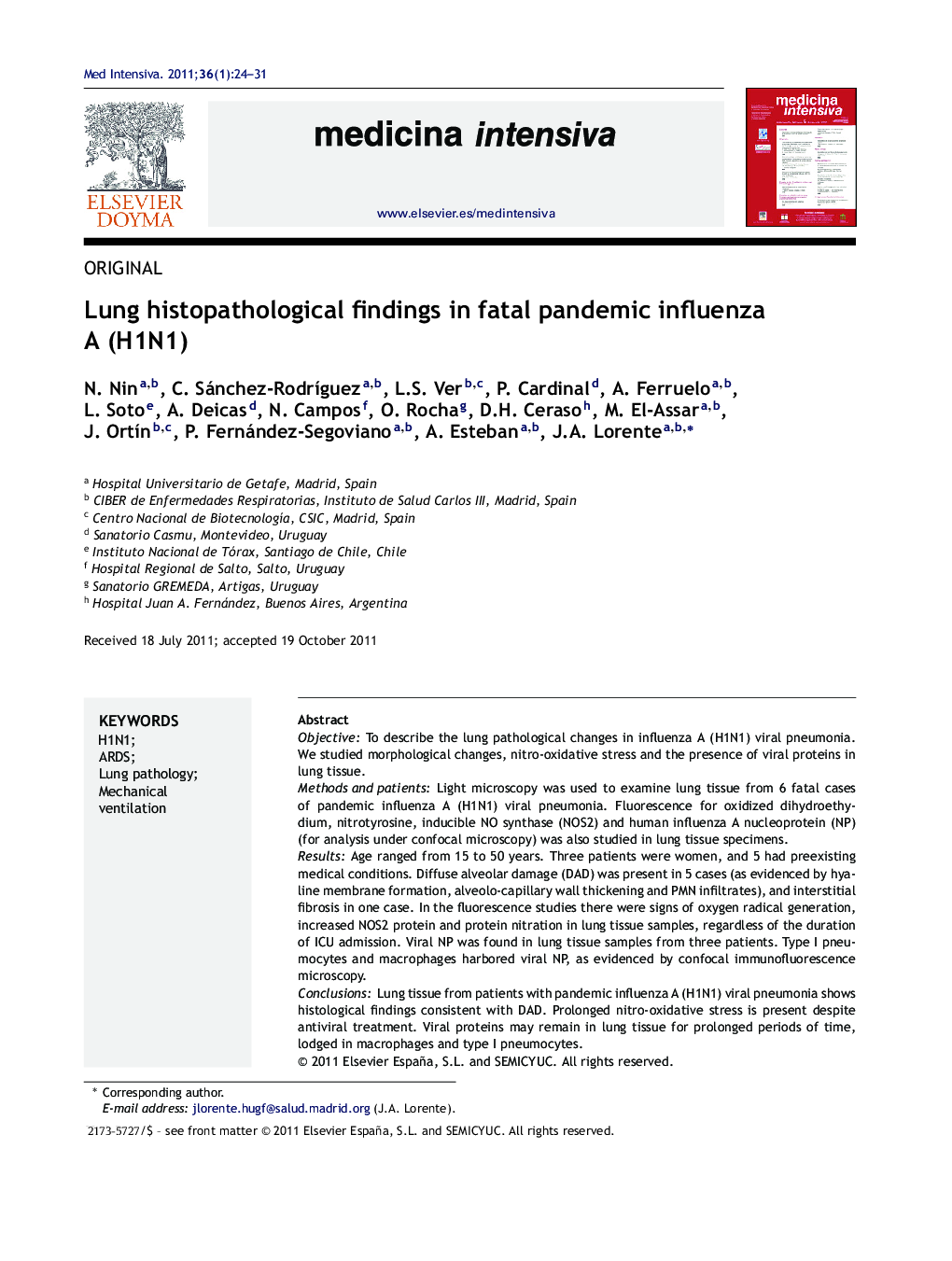| Article ID | Journal | Published Year | Pages | File Type |
|---|---|---|---|---|
| 3114354 | Medicina Intensiva (English Edition) | 2012 | 8 Pages |
Abstract
To describe the lung pathological changes in influenza A (H1N1) viral pneumonia. We studied morphological changes, nitro-oxidative stress and the presence of viral proteins in lung tissue. Methods and patients: Light microscopy was used to examine lung tissue from 6 fatal cases of pandemic influenza A (H1N1) viral pneumonia. Fluorescence for oxidized dihydroethy-dium, nitrotyrosine, inducible NO synthase (NOS2) and human influenza A nucleoprotein (NP) (for analysis under confocal microscopy) was also studied in lung tissue specimens. Results: Age ranged from 15 to 50 years. Three patients were women, and 5 had preexisting medical conditions. Diffuse alveolar damage (DAD) was present in 5 cases (as evidenced by hya-line membrane formation, alveolo-capillary wall thickening and PMN infiltrates), and interstitial fibrosis in one case. In the fluorescence studies there were signs of oxygen radical generation, increased NOS2 protein and protein nitration in lung tissue samples, regardless of the duration of ICU admission. Viral NP was found in lung tissue samples from three patients. Type I pneu-mocytes and macrophages harbored viral NP, as evidenced by confocal immunofluorescence microscopy.Conclusions Lung tissue from patients with pandemic influenza A (H1N1) viral pneumonia shows histological findings consistent with DAD. Prolonged nitro-oxidative stress is present despite antiviral treatment. Viral proteins may remain in lung tissue for prolonged periods of time, lodged in macrophages and type I pneumocytes.
Related Topics
Health Sciences
Medicine and Dentistry
Critical Care and Intensive Care Medicine
Authors
N. Nin, C. Sánchez-RodrÃguez, L.S. Ver, P. Cardinal, A. Ferruelo, L. Soto, A. Deicas, N. Campos, O. Rocha, D.H. Ceraso, M. El-Assar, J. OrtÃn, P. Fernández-Segoviano, A. Esteban, J.A. Lorente,
